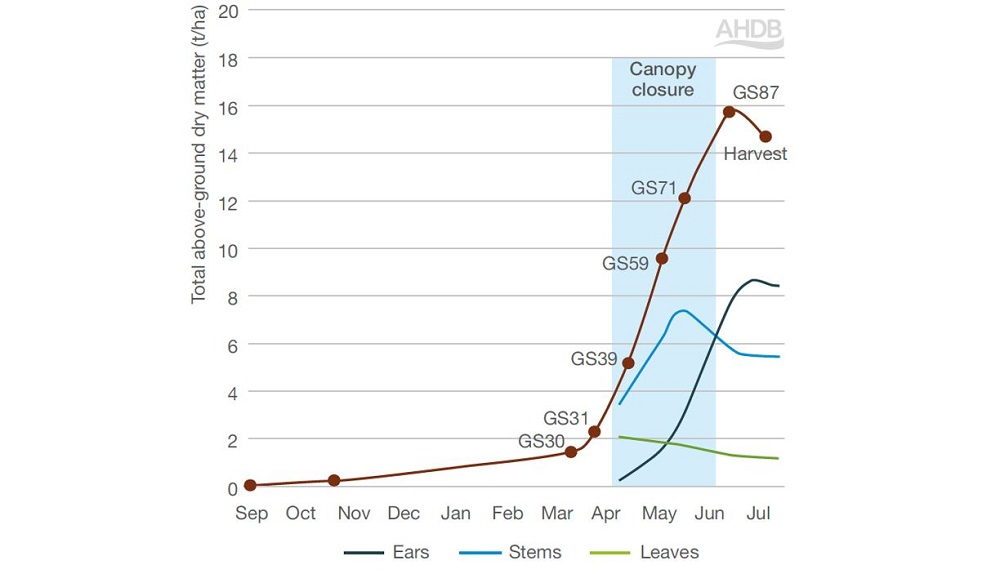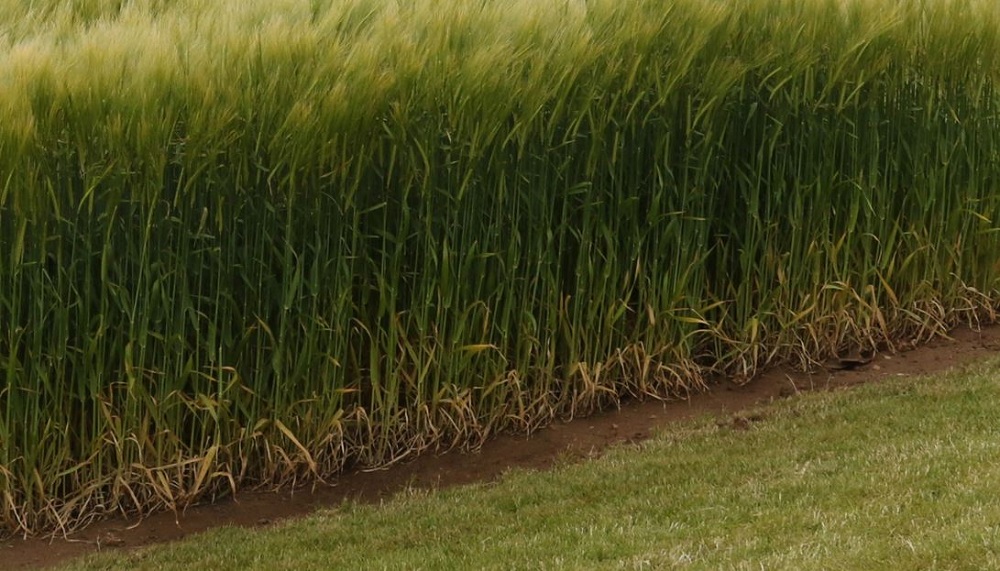- Home
- Knowledge library
- Biomass growth and dry matter accumulation in barley
Biomass growth and dry matter accumulation in barley
Biomass growth represents the net effect of photosynthesis, after losses from respiration and leaf fall. It can be assessed by measuring changes in above-ground dry matter over time.
Growth guides for wheat, barley and oilseed rape
How to measure dry matter in cereals
Key facts about barley growth
- Growth is slow before the canopy closes
- Greatest growth occurs after the canopy closes (after early stem extension)
- Crop dry weight gain slows midway through grain filling (after considerable canopy senescence)
- Growth is maximised in bright, cool weather
 AHDB
AHDB
Growth up to canopy closure
Benchmark: Growth before canopy closure = 2.7 t/ha by 21 April
Varietal influence: Medium
Other influences: N supply, sowing date, plant population, temperature
Between sowing and canopy closure (about five days after GS31), around 18% of total dry matter is produced. Growth is slow during this period, which can extend up to 200 days, as the canopy is incomplete.
Growth after canopy closure
Benchmark: Growth after canopy closure (GAI >3) = 0.2 t/ha/day dry matter (an extra 11 t/ha by 20 June)
Varietal influence: Medium
Other influences: N supply, light, temperature, water
A GAI of over 3 is maintained for eight weeks. During this period (early stem extension to late grain fill), the crop generates about 70% of its total dry matter. The length of this phase is largely governed by temperature.
During this phase, the crop intercepts more than 70% of available light for photosynthesis. Light availability affects the rate of dry matter accumulation. Cloud cover can reduce light energy by 75%.
The canopy begins to senesce at GS59 but dry matter gain hardly decreases until midway through grain filling.
Dry matter redistribution during grain filling
Varietal influence: Medium
Other influences: N supply, plant population
Dry matter accumulates in the ear until GS87, when maximum crop dry weight occurs. During this period, stems and leaves lose weight through respiration and translocation of carbohydrate reserves and N into the developing grain. Stems do not lose soluble reserves until after GS71, when final internodes stop extending. After GS87, as leaf tissue is shed before harvest, the crop dry weight falls.
Growth in spring barley
Between GS31 and ear emergence, the crop accumulates biomass at 0.2 t/ha/day.
Final total biomass in spring barley (12.5 t/ha at GS87) is about 80% of winter barley.
Natural resource capture and conversion by cereal crops
Discover how wheat and barley capture and convert natural resources (solar energy, carbon dioxide and water) into edible (e.g. grain) and other forms of biomass/energy.


